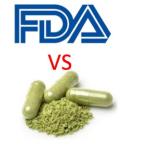Here's the mission statement from the website of Physicians for Responsible Opioid Prescribing (PROP):
opioid drugs
An estimated 100,000+ people in the US, the majority of whom are black or Hispanic, suffer from a hereditary condition, which causes changes in the structure and function of red blood cells.
A new press announcement released by FDA commissioner Scott Gottlieb is going to hit a lot of nerves, many of which are already raw.
We have been discussing narcotic abuse lately.
A current article i




